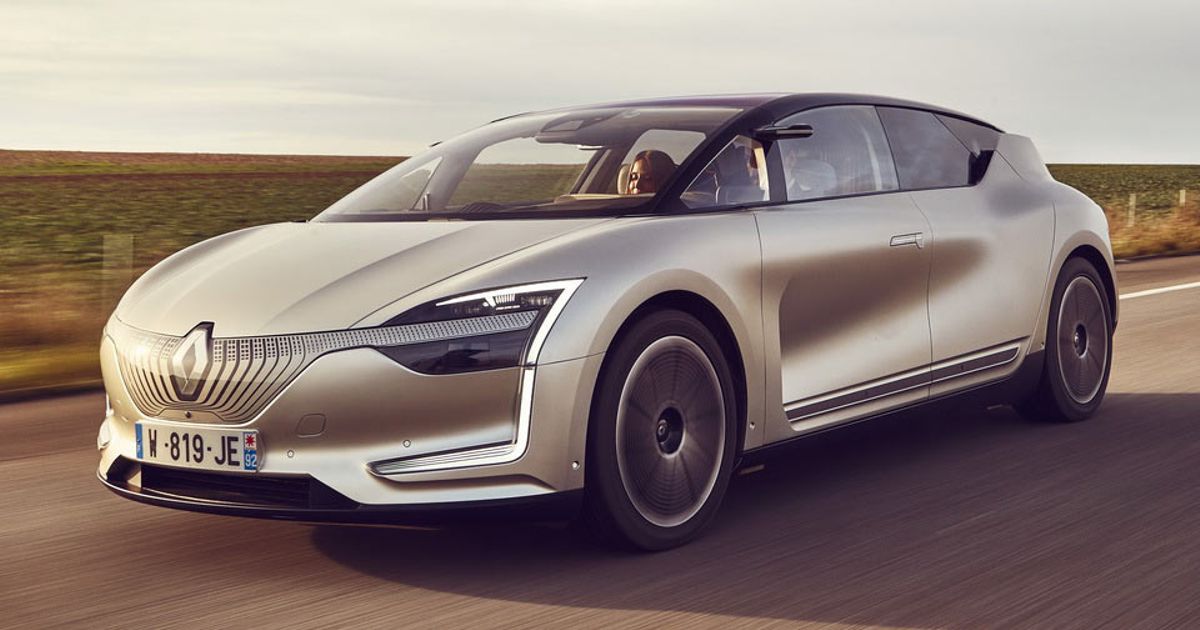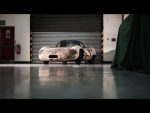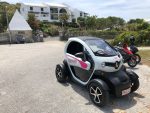
After unveiling the Symbioz concept at this year’s Frankfurt Motor Show in September, Renault is now giving journalists the chance to climb inside an actual prototype and go for a test drive.
According to Renault, this is the first rolling prototype built to be autonomous from the ground up, setting us up to experience the year 2023, in the present.
Aside from featuring Level 4 autonomous driving capabilities, meaning you can take your mind off the road, the Symbioz is also a zero emissions vehicle, powered by two electric motors, and fully connected.
“You cannot re-imagine the future of mobility until you’ve been in the SYMBIOZ demo car. Our engineering and design teams have pushed into the next decade with an autonomous car that lets you experience a new kind of mobility.”
“Electric and connected, this working concept car is designed from the outset to challenge old paradigms about getting from place to place. We’re excited to show the world our vision – and to let them sample the future of Renault,” said the automaker’s product engineering VP, Gaspar Gascon Abellan.
The demo car’s two electric motors are located on the rear axle, and work together with Renault’s 4Control all-wheel steering system, offering improved dynamics on the road. In terms of specs, the prototype delivers 360 kW (489 PS) and 550 Nm (405 lb-ft) of torque continuously, although the maximum power is rated at 500 kW (680 PS) and 660 Nm (486 lb-ft) of torque. The result of that is a 0 to 100 km/h (62 mph) time of 6 seconds flat.
While the prototype features a 72kWh battery back, the architecture itself can accommodate batteries with a capacity of up to 100kWh. As for charge times, you can juice them up to 80% in less than half an hour.
The Symbioz measures 4.92 meters (16.1 ft) long, 1.92 meters (6.3 ft) wide and 1.44 meters (4.2 ft) high, with a wheelbase of 3.07 meters (10 feet). It’s quite a large car, and thanks to its styling (the vast glazed upper), it will let ample light into the cabin while optimizing exterior visibility.
Speaking of styling, the exterior has a wide range of aerodynamic features, such as the vertical air intakes, side wind deflectors and a roof spoiler (deploys automatically in Dynamic mode). Beneath the design, you’ll find Lidars concealed in the front headlights and rear bumper, radars and ultrasound sensors behind the bodywork, a front camera, rear camera and lateral cameras hidden in the door handles.
Inside, there is no center console and the air vent system has been designed to achieve a flat floor. Meanwhile, storage areas in the dashboard have been moved to free up space on the sides and the door panels have been optimized with built-in lighting.
The entire cabin layout of the Symbioz demo car changes automatically according to which driving mode you’ve selected. In AD mode, the steering wheel and dashboard move back 12 cm (4.7 inches), while Dynamic mode offers the driver additional lateral support for a bucket seat feel, while changing engine, steering and chassis settings. As for Classic mode, that’s the standard mode, where everything is positioned like in a conventional car.
If you want to let the car do all the driving, you can relax and use the Symbioz’s virtual reality experience. Just put on the helmet and go on a virtual journey. It’s important to note that the system makes sure to reproduce the speed, trajectory, position on the road as well as the surrounding vehicles in real time so as to provide a comfortable experience.
According to Renault, the Symbioz demo car was developed simultaneously alongside the concept car, with partners such as LG and Ubisoft providing technical expertise. The next step for the French automaker will be to offer Level 2 autonomous driving in one of their cars in the year 2019, while Level 4-ready models will appear starting in 2022, pending government regulatory approvals.













































































































